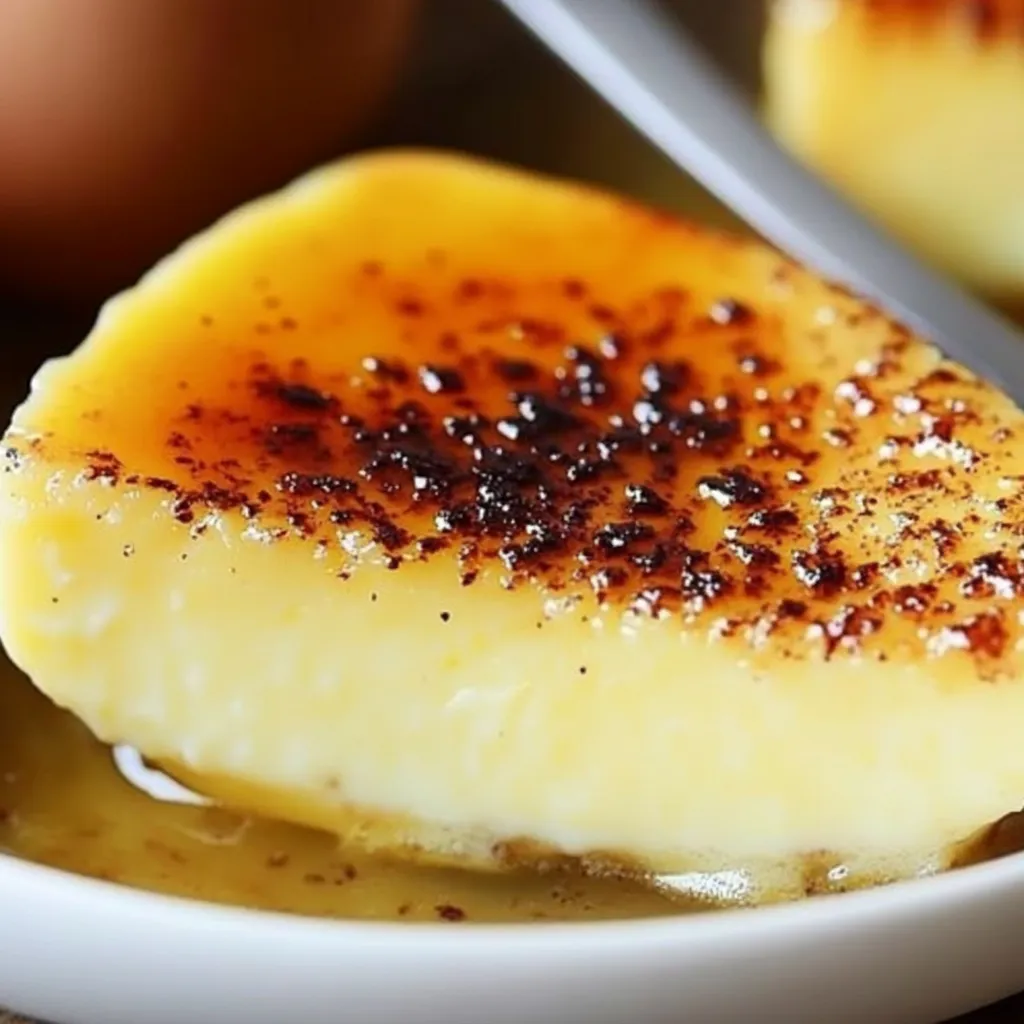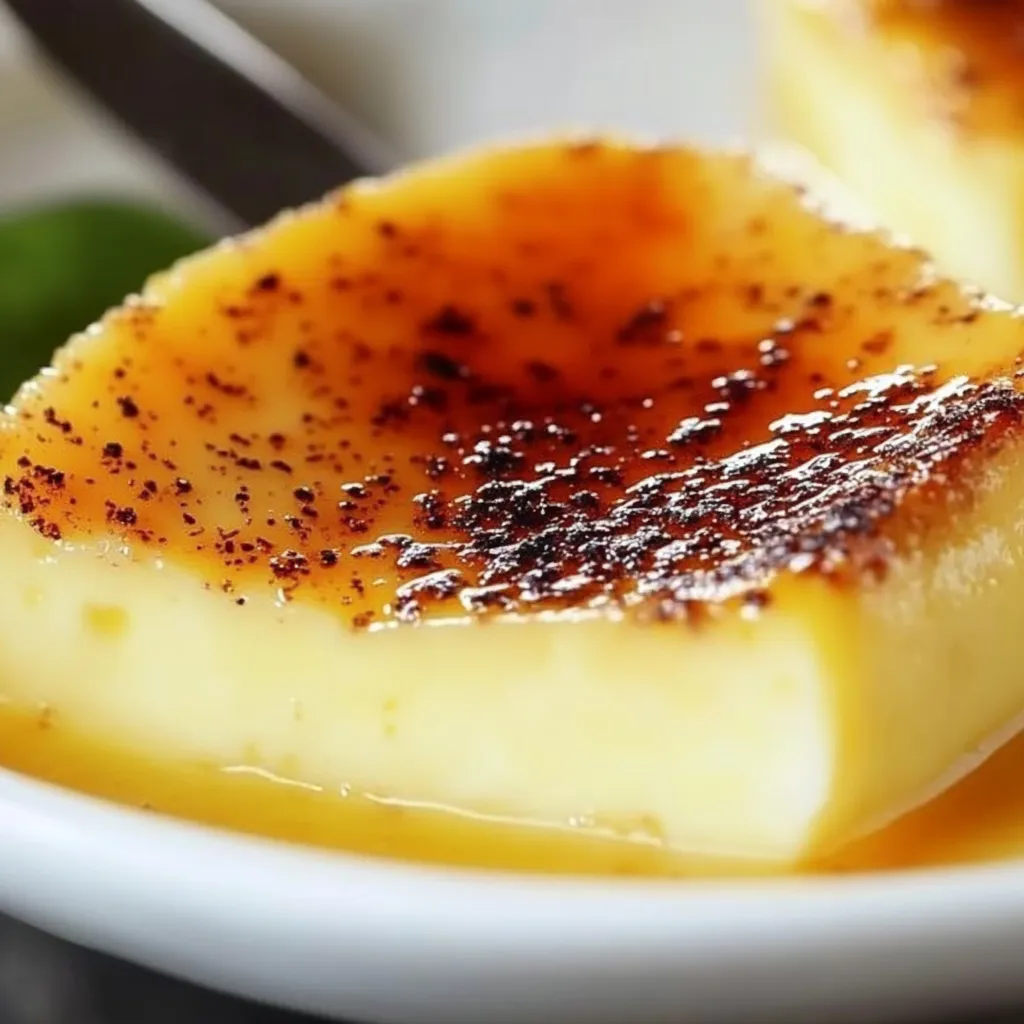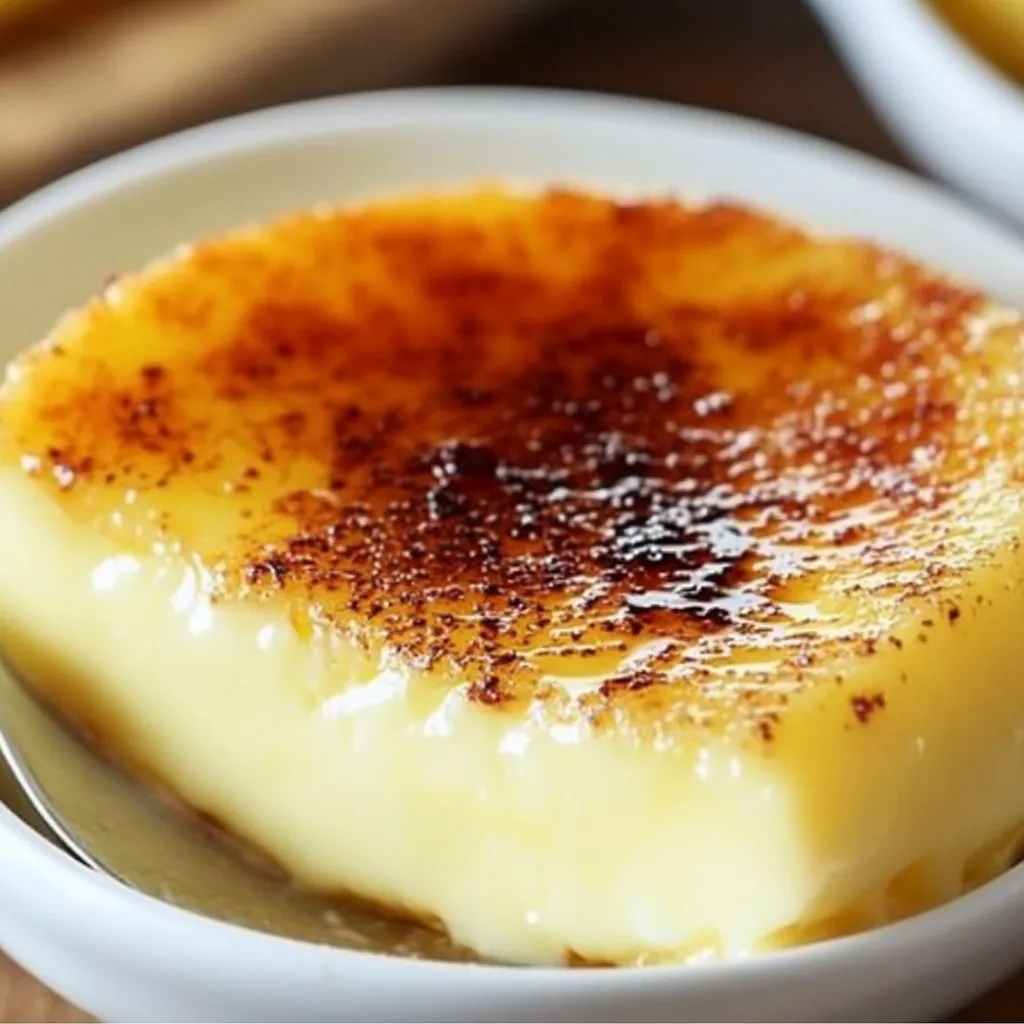 Pin it
Pin it
This silky smooth egg custard recipe has been my secret weapon for impressing dinner guests and comforting my family for over a decade. The delicate balance of creamy texture with just the right amount of sweetness creates a dessert that feels both nostalgic and sophisticated.
I discovered this fail proof method during my first holiday hosting disaster when the fancy dessert I planned completely flopped. This humble custard saved the day and has since become the most requested dessert at our family gatherings.
Ingredients
- Fresh eggs: At room temperature ensure the smoothest texture and best incorporation
- Granulated sugar: Provides just enough sweetness without overwhelming the delicate egg flavor
- Pure vanilla extract: Adds warmth and depth; use high quality for best results
- Fine sea salt: Enhances all the flavors and balances the sweetness
- Whole milk: Creates the richest custard but 2 percent works beautifully too
- Optional nutmeg: Adds a subtle warmth and traditional finish
Step-by-Step Instructions
- Preheat and Prep:
- Begin by preheating your oven to 350°F and gently greasing an 8×8 inch baking dish with butter or a light coating of cooking spray. The greasing is crucial for clean serving later but avoid using too much as it can create an oily film on your custard.
- Mix the Egg Base:
- In a large mixing bowl whisk together eggs sugar vanilla extract and salt until completely smooth. The mixture should become slightly frothy and the sugar should fully dissolve. This usually takes about 2 minutes of vigorous whisking which builds the foundation for a silky smooth custard.
- Heat the Milk:
- Pour the milk into a heavy bottomed saucepan and heat over medium low heat. Watch it carefully as it warms stir occasionally to prevent scorching. Heat until you see tiny bubbles forming around the edges about 180°F on an instant read thermometer. Never allow it to reach a full boil which would change the protein structure and affect your final texture.
- Combine Milk and Egg Mixture:
- This is the most critical step for custard success. While whisking the egg mixture constantly with one hand slowly pour a thin stream of hot milk with the other hand. This technique called tempering gradually raises the temperature of the eggs without cooking them. Continue until all milk is incorporated then whisk for 30 more seconds to ensure complete blending.
- Prepare for Baking:
- Pour the custard mixture through a fine mesh strainer into your prepared baking dish to catch any egg bits that may have solidified. This extra step ensures the smoothest possible texture. If using nutmeg sprinkle a light dusting over the top for a beautiful aroma and classic appearance.
- Water Bath Baking:
- Place your filled custard dish inside a larger baking pan. Carefully pour hot water into the larger pan until it reaches about halfway up the sides of your custard dish. This water bath moderates the heat ensuring gentle even cooking that prevents curdling or a rubbery texture.
- Bake to Perfection:
- Carefully transfer the entire setup to your preheated oven. Bake for 45 to 50 minutes until the edges are set but the center still has a slight wobble when gently shaken. A knife inserted about 1 inch from the edge should come out clean. The custard will continue setting as it cools so resist the urge to bake until completely firm.
- Cool and Serve:
- Remove from the oven and carefully lift the custard dish from the water bath. Allow to cool on a wire rack for 30 minutes before serving warm or refrigerate for at least 2 hours to serve chilled. The flavors actually develop and improve after several hours of chilling.
 Pin it
Pin it
The secret to this custard truly lies in the quality of your eggs. I learned from my grandmother that farm fresh eggs with vibrant orange yolks create a richer color and more developed flavor. She would never make this recipe with store bought eggs during the spring when her backyard chickens were laying at their peak.
Troubleshooting Common Issues
The two most common issues with custard are weeping where liquid separates from the custard and curdling where the eggs cook too quickly creating a lumpy texture. Both problems can be avoided with proper temperature control. Never exceed 350°F in your oven and always use the water bath method. If your custard still weeps you may have overbaked it. Next time try reducing your baking time by 5 minutes.
Flavor Variations
While vanilla custard is a classic you can experiment with different flavor profiles. Try adding 1 teaspoon of cinnamon or cardamom to the egg mixture or replace the vanilla with almond extract. For a citrus infused version add 1 tablespoon of lemon or orange zest to the milk as you heat it then strain before combining with the eggs. During holiday seasons I often infuse the milk with a cinnamon stick and star anise for 30 minutes before straining and proceeding with the recipe.
Serving Suggestions
This versatile dessert can be presented in numerous ways. For an elegant dinner party portion individual servings into ramekins before baking reduce cooking time to about 30 minutes and serve with fresh berries and a mint leaf. For a cozy family dessert pair warm custard with poached fruit or a drizzle of caramel sauce. During summer months I love serving it chilled with a compote of whatever berries are in season.
 Pin it
Pin it
Serve this dessert with confidence knowing you’ve mastered the art of custard. It’s sure to become a staple in your recipe collection.
Frequently Asked Questions
- → Why is a water bath necessary for baking custard?
A water bath provides gentle, even heat distribution that prevents the custard from curdling or developing a rubbery texture. The surrounding water maintains a consistent temperature and creates humidity in the oven, allowing the custard to set with that perfect, silky smooth consistency.
- → How do I know when my custard is perfectly done?
A perfectly baked custard should have a slight jiggle in the center when gently shaken. Insert a knife into the center—it should come out clean but the custard should still wobble a bit. If it's completely firm, it's overbaked. The custard will continue to set as it cools.
- → What's the best way to temper eggs for custard?
To temper eggs properly, slowly pour hot milk into the egg mixture in a thin stream while whisking constantly. This gradually raises the temperature of the eggs without cooking them, preventing curdling. Continue whisking until fully incorporated for the smoothest results.
- → Can I make this custard with plant-based milk?
Yes, but with adjustments. Full-fat coconut milk or oat milk work best for richness. Soy milk can work but may require additional thickening. Almond milk typically produces thinner results. Plant-based milks generally need longer cooking times and may set differently than dairy.
- → How long does homemade custard last in the refrigerator?
Homemade custard will keep for 3-4 days when stored properly in the refrigerator. Cover it tightly with plastic wrap directly touching the surface to prevent a skin from forming. For the best texture and flavor, consume it within the first 2 days.
- → Why did my custard curdle or separate?
Curdling typically occurs from overcooking, heating too quickly, or inadequate tempering. Make sure to use a water bath, keep oven temperature accurate, avoid boiling the milk, and temper eggs properly by adding hot milk gradually while whisking constantly.
